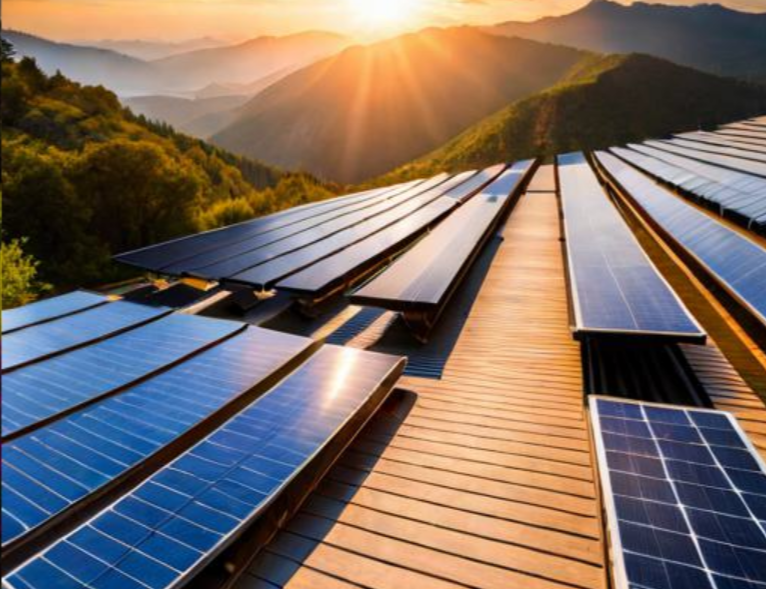We need alternative current to run all kinds of electrical equipment’s / electrical gadgets / electrical appliances. Solar Inverter main function is to send AC (alternative current) by converting the DC (direct Current). Without conversion process, we only get DC (direct current) from the solar panels. So, Solar Inverter plays a vital role in the conversion process. We can get DC Fans in the market where we can connect them directly to the solar panels. But DC current is dangerous, so, don’t try anything without any proper guidance or ask a technical person to fix your home appliances.
Nowadays, Inverters are necessary to run essential appliances as well as electrical goods where power outages are more frequent.

How Solar Inverters Work?
The solar photovoltaic PV cells capture the sun’s rays and transfer them as DC current, which is then fed into the solar inverter. The solar inverter then converts the DC electricity into AC electricity, which can be used to power electrical devices or fed back into the grid. The inverter also manages the flow of electricity between the solar panels, battery storage (if present), and the electrical grid.
Solar Inverter Types
Solar Inverters are available in different types namely Battery Backup Inverters, Grid Tie Inverters, Off Grid Inverters, Micro Inverters, Hybrid Inverters.
Solar Inverters are available in different rating starting from 500VA, 600VA, 825VA, 1400VA, 2.5KVA, 3.5KVA, 5KVA, 7.5KVA. For a small home, depending on their power usage, we can use 500VA, 600VA, 825VA, 1400VA. For higher energy consumption, if they are using AC, a minimum of 3KW (Kilo Watt) Solar Power System has to be installed.
Offgrid Solar PV System
Offgrid, a standalone system, as the name suggests is not connected to the grid. Off-grid solar systems are used in remote locations where connecting to the electricity grid is impossible or in areas where grid power is inconsistent, or due to the appeal of an independent lifestyle. OFF – Grid Systems are not connected to the Utility Grid. This system has battery bank that are charged by the solar panels and sent to the inverter where the Dc current is converted to AC. This System is Suitable for areas where Utility Grid Power is not available or inconsistent.
Grid tie Solar PV System
In a Grid tie system, the power is supplied by a combination of both the solar panel and utility grid. This type of system only operates when the grid power is available. In the day time, the solar PV panels generates electricity and used for the loads. If you need more electricity than your own production then the utility grid will provide that difference and this is calculated with the help of net metering system.
Battery Backup Inverter:
A battery backup system takes the best characteristics of both Stand Alone and Grid-Tied System. In this method, the system has an added feature of battery backup for essential applications even when the grid is down. During the power cuts, the solar panels provides energy for day time loads and the battery will be charged for the night time loads or for non sunny days. Grid power will be used only when there is no sufficient power from the solar plant and the battery will be charged through solar power as well as through the grid power.
Solar inverters are an essential component of any solar power system. They convert the direct current (DC) generated by solar panels into alternating current (AC), which is the type of electricity that can be used to power household appliances and other electrical devices. In this article, we will explore how solar inverters work and answer some common questions about their pricing.
Solar Inverter Pricing
The pricing of solar inverters can vary widely based on their capacity, features, and manufacturer. Here are the prices for some common solar inverter sizes in India:
4KVA solar inverter: The price of a 4KVA solar inverter can vary from INR 40,000 to INR 50,000.
5KVA solar inverter: The price of a 5KVA solar inverter can vary from INR 60,000 to INR 90,000.
12.5 kVA solar inverter: The price of a 12.5 kVA solar inverter can vary from INR 1,00,000 to INR 1,15,000.
25 kVA solar inverter: The price of a 24 kVA solar inverter can vary from INR 2,00,000 to INR 2,15,000.
It is important to note that these prices are indicative and can vary depending on factors such as the manufacturer, installation costs, and any additional features or warranties.
Solar inverters play a critical role in the functioning of a solar power system. They convert DC electricity into AC electricity and manage the flow of electricity between the solar panels, battery storage, and the electrical grid. The pricing of solar inverters can vary widely depending on their capacity, features, and manufacturer. It is always advisable to consult with a solar power expert to determine the appropriate size and type of solar inverter for your specific needs.